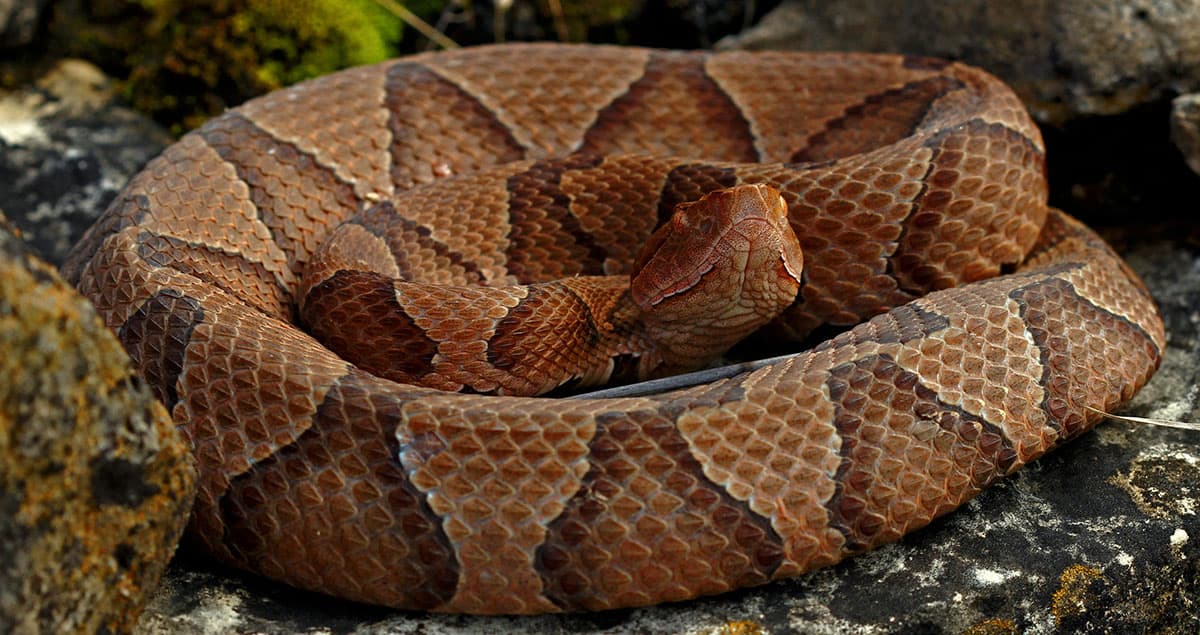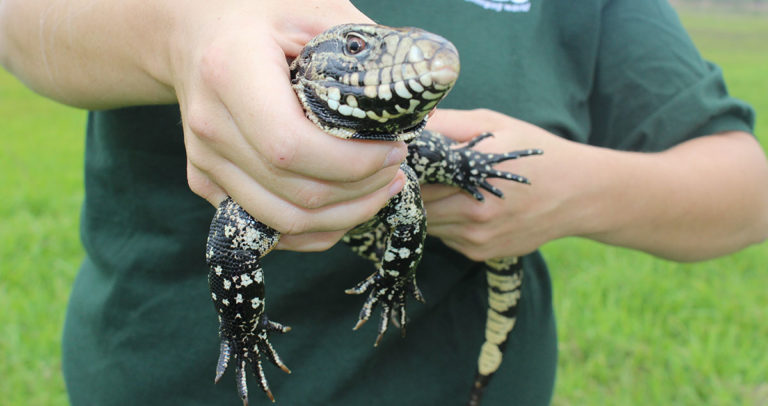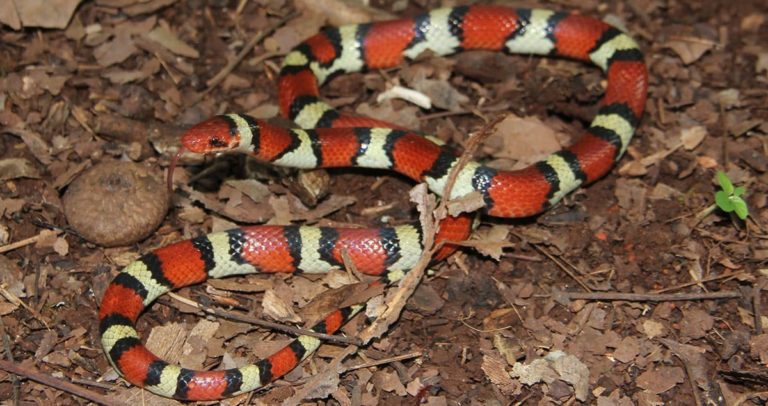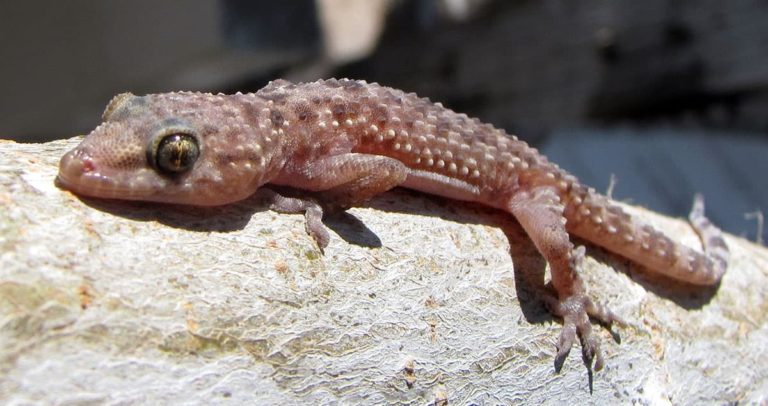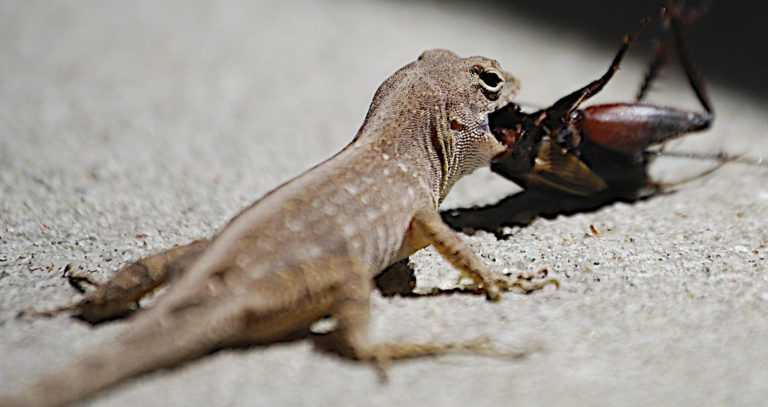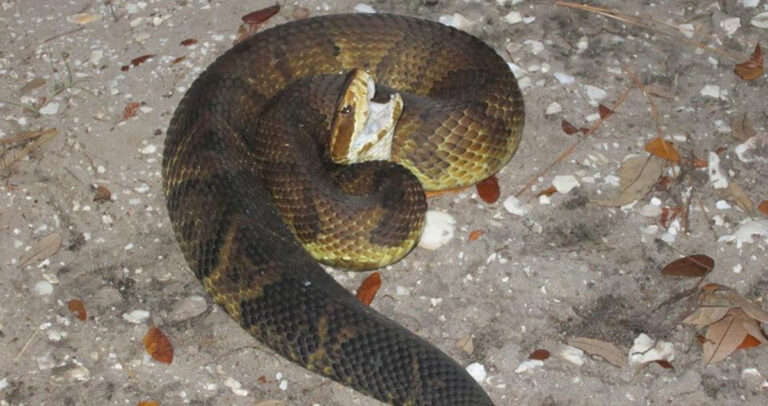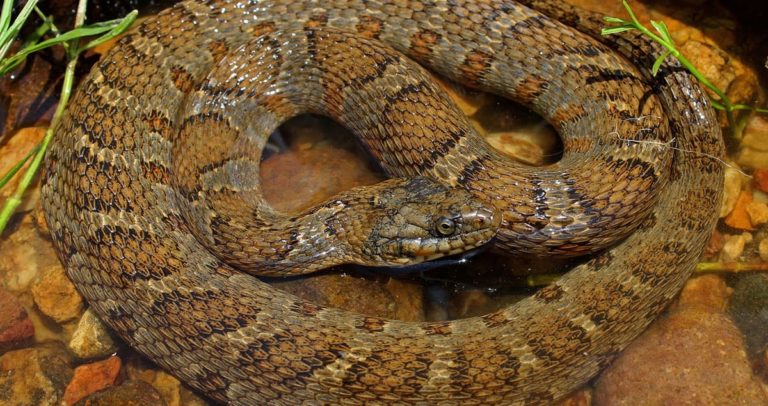Georgia’s Most Common Pit Viper: The Copperhead
*Copperhead image courtesy of Peter Paplanus
The copperhead, a pit viper native to Georgia, is one of the state’s six venomous species. This article offers detailed insight into this snake’s biology, habitat, behavior, conservation status, and its interactions with humans in Georgia.
Identification
The copperhead (Agkistrodon contortrix) is a pit viper belonging to the Viperidae family. Adults range from 24 to 36 inches in length, making them medium-sized compared to other venomous snakes. They can be easily recognized by their distinctive copper-colored heads and bands of hourglass-shaped crossbands, which range in color from light tan to deep chestnut. Their broad, triangular heads and vertical pupils are characteristic of pit vipers, while the pits between their eyes and nostrils enable them to detect heat.
Distribution and Habitat
Copperheads are widespread across Georgia and inhabit a range of environments, including deciduous forests, rocky outcroppings, wooded slopes, and floodplains. They prefer areas with ample cover, such as leaf litter, fallen logs, or rock piles. This adaptability allows them to thrive in both rural and urban settings. Copperheads can also be found in suburban neighborhoods and areas with dense vegetation, where they seek shelter and hunt.
Within Georgia, they are especially common in the Piedmont and Coastal Plain regions but are less common in the highest elevations. Their adaptability makes them resilient, and they often coexist near human activity, leading to occasional encounters.
Behavior and Lifestyle
Copperheads are solitary and primarily nocturnal, although they may bask in the sun during cooler periods. They are ambush predators, often lying in wait to strike at passing prey. They feed on small mammals, birds, amphibians, and insects. Juveniles often attract prey by using their brightly colored tail tips to lure insects and small frogs.
Mating occurs in spring and sometimes in the fall, with females giving live birth to an average of 5-10 young. Newborn copperheads are well-developed and capable of hunting soon after birth.
Venom and Its Implications
While copperheads are venomous, their venom is relatively mild compared to other pit vipers. A bite can cause significant pain, swelling, and tissue damage, but fatalities are rare. Nevertheless, medical attention is required immediately after a bite. Treatment typically includes supportive care and antivenom in severe cases.
Despite their venom, copperheads are not aggressive and tend to remain still or rely on their camouflage when threatened. Bites generally occur only if a person steps on or provokes the snake.
Conservation Status
Copperheads are currently not threatened or endangered in Georgia. However, they face challenges due to habitat loss, road mortality, and intentional killing out of fear or misinformation. They are also sometimes captured illegally for the pet trade.
Conservation efforts focus on habitat preservation and public education, emphasizing the important ecological role these snakes play in controlling rodent populations.
Co-existing with Copperheads
Coexisting with copperheads requires respect for their habitats and understanding of their behavior. If you encounter one, keep a safe distance and allow the snake to move away. They are unlikely to bite unless they feel threatened or cornered.
If you live in copperhead territory, ensure your property is well-maintained to discourage them from seeking shelter. Wear boots and long pants when walking through wooded areas or dense vegetation.
Final Thoughts
Copperheads are an integral part of Georgia’s ecosystem, contributing to the balance of local wildlife populations. Learning about their behavior and respecting their habitats will help ensure their survival for future generations. Educating ourselves and others about these fascinating creatures will foster coexistence.
Frequently Asked Questions
What should I do if I’m bitten by a copperhead?
Seek immediate medical attention. Although their venom is generally mild, it can still cause significant symptoms that require proper care.
Are copperheads aggressive?
No, copperheads prefer to avoid confrontation. They typically remain motionless or use camouflage when threatened, biting only as a last resort.
How can I support copperhead conservation in Georgia?
Support local conservation efforts, respect their habitats, and raise awareness about the ecological importance of copperheads. Reporting sightings to wildlife authorities also helps with monitoring and conservation planning.
